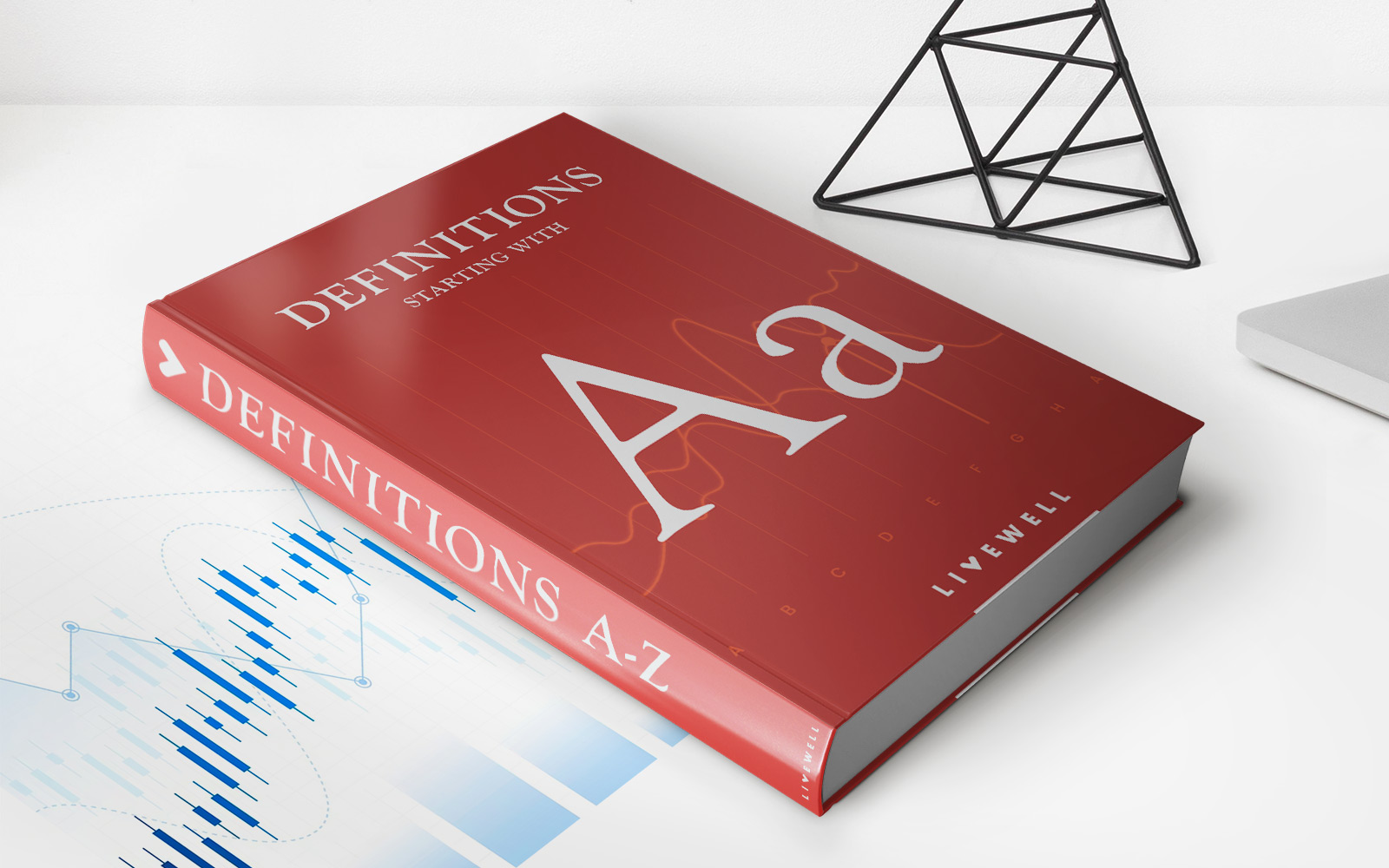Home>Finance>How To Understand Your Mortgage Statement Balance


Finance
How To Understand Your Mortgage Statement Balance
Published: March 2, 2024
Gain clarity on your mortgage statement balance with our expert finance tips. Understand the key details and take control of your finances today.
(Many of the links in this article redirect to a specific reviewed product. Your purchase of these products through affiliate links helps to generate commission for LiveWell, at no extra cost. Learn more)
Table of Contents
Introduction
Understanding your mortgage statement balance is crucial for managing your finances and ensuring that you stay on top of your homeownership responsibilities. Your mortgage statement provides a snapshot of your loan status, including the remaining balance, monthly payment breakdown, and any additional fees or charges. By comprehending the components of your mortgage statement balance, you can make informed decisions about your budget, repayment strategy, and overall financial well-being.
Your mortgage statement balance serves as a financial compass, guiding you through the intricacies of homeownership and loan repayment. Whether you're a first-time homebuyer or a seasoned homeowner, deciphering the details of your mortgage statement can empower you to take control of your financial future. In this article, we'll delve into the essential elements of a mortgage statement balance, shedding light on its various components and offering insights into how you can effectively manage and verify this crucial aspect of your homeownership journey.
Understanding the intricacies of your mortgage statement balance can provide peace of mind and clarity as you navigate the responsibilities of homeownership. By gaining a comprehensive understanding of this financial document, you can confidently assess your loan status, track changes in your balance over time, and ensure the accuracy of the information provided by your mortgage servicer. Let's embark on a journey to demystify the elements of your mortgage statement balance, empowering you to make informed financial decisions and achieve greater confidence in managing your mortgage.
What is a Mortgage Statement Balance?
A mortgage statement balance is a comprehensive summary of your loan status, providing a detailed account of the outstanding amount you owe on your mortgage. This essential financial document is typically issued by your mortgage servicer on a monthly basis, offering a breakdown of your current balance, monthly payment details, and any additional fees or charges incurred. It serves as a vital tool for homeowners to monitor their loan repayment progress and gain insights into the financial aspects of their homeownership.
At its core, the mortgage statement balance encapsulates the remaining principal amount of your loan, representing the portion of the original loan that is yet to be repaid. This figure forms the cornerstone of your mortgage obligations, influencing the duration of your repayment and the overall cost of homeownership. Additionally, the mortgage statement balance encompasses various components such as interest, escrow contributions, and any additional fees, providing a holistic view of your financial responsibilities related to your mortgage.
Understanding the intricacies of your mortgage statement balance is paramount for maintaining financial clarity and effectively managing your homeownership obligations. By comprehending the nuances of this financial document, you can gain insights into your loan status, track changes in your balance over time, and ensure the accuracy of the information provided by your mortgage servicer. This knowledge empowers you to make informed decisions about your budget, repayment strategy, and long-term financial planning, fostering a sense of control and confidence in managing your mortgage.
Understanding Your Monthly Payment Breakdown
When reviewing your mortgage statement, it’s essential to grasp the breakdown of your monthly payment, as it encompasses various components that contribute to your overall mortgage statement balance. Your monthly payment typically consists of several key elements, each playing a distinct role in shaping your financial obligations and impacting the trajectory of your loan repayment.
Principal: A portion of your monthly payment is allocated towards reducing the principal balance of your mortgage. This directly contributes to chipping away at the original amount borrowed, gradually building equity in your home as you make these payments.
Interest: Another component of your monthly payment is the interest accrued on the remaining balance of your loan. This represents the cost of borrowing and is a crucial factor in determining the overall expense of homeownership. As you progress through your loan term, the portion of your payment dedicated to interest may decrease as the outstanding balance diminishes.
Escrow Contributions: If your mortgage includes an escrow account for managing property taxes and insurance premiums, a portion of your monthly payment is allocated to this account. This ensures that funds are set aside to cover these expenses when they become due, providing a convenient way to manage these financial obligations alongside your mortgage payments.
By understanding the breakdown of your monthly payment, you can gain clarity on how each component influences your mortgage statement balance and overall loan status. This insight allows you to assess the distribution of your payments, track the reduction of your principal balance, and comprehend the interplay between interest, escrow contributions, and your long-term financial obligations.
Interest and Principal
Interest and principal are fundamental components of your mortgage payment, each playing a pivotal role in shaping your loan repayment and influencing your mortgage statement balance. Understanding the dynamics of interest and principal is essential for homeowners seeking to manage their financial obligations effectively and make informed decisions about their mortgage.
Principal: The principal portion of your mortgage payment directly contributes to reducing the original amount borrowed to purchase your home. As you make regular payments, a portion is allocated to chip away at the principal balance, gradually building equity in your property. Over time, this leads to a decrease in the outstanding amount owed, reflecting your progress in repaying the loan and increasing your ownership stake in your home.
Interest: Interest is the cost of borrowing money and is a significant component of your mortgage payment. It is calculated based on the remaining balance of your loan and the interest rate. During the early stages of your mortgage term, a larger portion of your monthly payment is allocated to interest, gradually decreasing as the principal balance diminishes. Understanding the interplay between interest and principal empowers homeowners to gauge the long-term cost of borrowing and assess the impact of their payments on the overall loan balance.
By comprehending the dynamics of interest and principal, homeowners can gain clarity on the factors influencing their mortgage statement balance and the gradual reduction of their loan obligation. This knowledge enables informed financial planning, allowing homeowners to strategize their repayment approach, assess the long-term cost of borrowing, and track the evolution of their mortgage balance over time.
Escrow Account
An escrow account is a crucial component of many mortgage agreements, serving as a designated fund for managing property taxes and insurance premiums. When homeowners make monthly mortgage payments, a portion is often allocated to the escrow account to ensure that funds are set aside for these recurring expenses. This arrangement provides a convenient and systematic way to address property-related financial obligations alongside regular mortgage payments.
By incorporating an escrow account into your mortgage agreement, homeowners can avoid the burden of managing large lump-sum payments for property taxes and insurance premiums. Instead, these expenses are spread out and integrated into the monthly mortgage payment, offering a structured approach to financial planning and homeownership management.
Furthermore, the escrow account provides a layer of financial security for both homeowners and lenders. It ensures that essential expenses, such as property taxes and insurance, are consistently addressed, reducing the risk of delinquency or non-payment. This, in turn, helps safeguard the interests of all parties involved in the mortgage agreement.
Understanding the role of the escrow account empowers homeowners to effectively manage their financial responsibilities, maintain compliance with property tax and insurance obligations, and gain peace of mind knowing that these crucial expenses are systematically addressed. By comprehending the function of the escrow account and its impact on the monthly mortgage payment, homeowners can navigate their financial obligations with greater clarity and confidence.
Additional Fees and Charges
When reviewing your mortgage statement, it’s important to be mindful of potential additional fees and charges that may impact your overall mortgage statement balance. While the core components of your statement, such as principal, interest, and escrow contributions, form the foundation of your financial obligations, there are additional factors that can influence the total amount due and necessitate careful consideration.
Private Mortgage Insurance (PMI): For homeowners who made a down payment of less than 20% of the home’s purchase price, private mortgage insurance may be a requirement. This insurance protects the lender in the event of default and is typically included in the monthly mortgage payment. Being aware of PMI and its impact on your payment is essential for understanding the complete breakdown of your mortgage statement balance.
Late Payment Fees: It’s crucial to be mindful of the potential for late payment fees if your mortgage payment is not submitted by the due date. These fees can contribute to an increase in your overall mortgage statement balance and may have implications for your financial planning and budgeting.
Other Assessments: Depending on the terms of your mortgage agreement and the specific details outlined by your lender, there may be additional assessments or charges that impact your monthly statement balance. These could include fees for specific services, administrative costs, or other relevant expenses that should be considered when evaluating your mortgage statement.
By understanding the potential for additional fees and charges, homeowners can proactively manage their financial responsibilities and ensure that their mortgage statement balance accurately reflects the complete scope of their obligations. This awareness empowers homeowners to make informed decisions about their budgeting, repayment strategy, and overall financial planning, fostering a sense of control and confidence in managing their mortgage.
Changes in Balance Over Time
Monitoring changes in your mortgage statement balance over time is a fundamental aspect of managing your financial obligations and understanding the trajectory of your loan repayment. Your mortgage statement provides a snapshot of your evolving loan status, reflecting the impact of your payments, interest accrual, and any additional factors that influence the overall balance. By observing these changes, homeowners can gain valuable insights into the dynamics of their mortgage and make informed decisions about their financial planning.
As you progress through your mortgage term, several key factors contribute to changes in your balance:
- Principal Reduction: Each payment made towards your mortgage contributes to reducing the principal balance, gradually chipping away at the amount owed. Over time, this leads to a decrease in the outstanding balance, reflecting your progress in repaying the loan and building equity in your home.
- Interest Accrual: The ongoing accrual of interest influences the overall balance, particularly in the early stages of the loan term. Understanding the impact of interest on your balance provides clarity on the long-term cost of borrowing and the distribution of your payments.
- Escrow Adjustments: Changes in property taxes or insurance premiums can lead to adjustments in the escrow portion of your monthly payment, consequently impacting the overall balance reflected in your mortgage statement.
By staying attuned to these changes, homeowners can effectively track the evolution of their mortgage statement balance and assess the impact of their payments on the overall loan status. This awareness empowers informed decision-making, allowing homeowners to strategize their repayment approach, evaluate the long-term cost of borrowing, and gain clarity on the progress of their loan repayment.
Furthermore, observing changes in your balance over time provides an opportunity to identify any discrepancies or irregularities that may require attention. By actively monitoring these fluctuations, homeowners can ensure the accuracy of their mortgage statement and address any potential issues in a timely manner, fostering a sense of control and confidence in managing their mortgage.
How to Verify Your Mortgage Statement Balance
Verifying your mortgage statement balance is a crucial step in ensuring the accuracy of the information provided by your mortgage servicer and maintaining a clear understanding of your loan status. By conducting a thorough review of your mortgage statement, homeowners can identify any discrepancies, track changes in their balance, and gain confidence in managing their financial obligations. Here are essential steps to verify your mortgage statement balance:
- Review the Detailed Breakdown: Begin by carefully examining the detailed breakdown of your mortgage statement. Pay close attention to the allocation of your monthly payment towards principal, interest, escrow, and any additional fees or charges. This comprehensive review provides insight into the components shaping your mortgage statement balance.
- Compare with Previous Statements: Track changes in your balance by comparing the current statement with previous ones. Assess the evolution of your balance over time, noting any significant fluctuations or discrepancies that warrant further attention.
- Confirm Payment Application: Ensure that your payments are accurately applied to your mortgage account. Verify that the amounts you’ve submitted align with the payments reflected in your statement, confirming that your contributions are appropriately credited to your loan.
- Check Escrow Adjustments: If your mortgage includes an escrow account, review any adjustments related to property taxes or insurance premiums. Confirm that these adjustments are accurately reflected in your statement, aligning with the actual expenses associated with your property.
- Seek Clarification if Needed: If you encounter any discrepancies or require clarification on specific aspects of your mortgage statement, don’t hesitate to reach out to your mortgage servicer. Seeking guidance or addressing concerns promptly can help resolve any issues and ensure the accuracy of your mortgage statement balance.
By diligently verifying your mortgage statement balance, homeowners can proactively manage their financial responsibilities, identify any irregularities, and maintain confidence in the accuracy of their loan status. This proactive approach empowers homeowners to stay informed about their mortgage obligations, make informed decisions about their financial planning, and address any potential issues with clarity and confidence.
Tips for Managing Your Mortgage Statement Balance
Effectively managing your mortgage statement balance is essential for maintaining financial clarity, staying on top of your homeownership responsibilities, and making informed decisions about your loan repayment. By implementing strategic approaches and best practices, homeowners can navigate their mortgage obligations with confidence and proactively address their financial commitments. Here are valuable tips for managing your mortgage statement balance:
- Regularly Review Your Mortgage Statement: Make it a habit to thoroughly review each mortgage statement you receive. By staying informed about the components of your statement and tracking changes in your balance over time, you can identify any discrepancies and maintain a clear understanding of your loan status.
- Understand the Impact of Additional Payments: If you have the flexibility to make additional payments towards your mortgage, understand how these contributions can impact your balance and the overall cost of borrowing. Strategically allocating additional funds towards your principal can expedite the reduction of your loan balance and potentially reduce the long-term interest expense.
- Monitor Interest Rate Changes: Stay attuned to changes in interest rates and their potential impact on your mortgage. If you have an adjustable-rate mortgage (ARM), be mindful of potential adjustments and assess how these changes can influence your monthly payment and overall balance.
- Stay Informed About Escrow Account Management: If your mortgage includes an escrow account, be proactive in managing this aspect of your financial obligations. Stay informed about property tax assessments, insurance premiums, and any adjustments to your escrow contributions, ensuring that these expenses are systematically addressed alongside your mortgage payments.
- Engage with Your Mortgage Servicer: Maintain open communication with your mortgage servicer, seeking clarification on any aspects of your mortgage statement that may require further explanation. Addressing inquiries or concerns promptly can help ensure the accuracy of your statement and provide clarity on your financial obligations.
By implementing these tips, homeowners can effectively manage their mortgage statement balance, stay informed about their loan status, and make informed decisions about their financial planning. This proactive approach empowers homeowners to navigate the complexities of homeownership with confidence, ensuring that their mortgage obligations are managed with clarity and foresight.
Conclusion
Understanding and managing your mortgage statement balance is a fundamental aspect of responsible homeownership and effective financial planning. Your mortgage statement serves as a comprehensive reflection of your loan status, encompassing essential components such as principal, interest, escrow contributions, and additional fees. By gaining a thorough understanding of your mortgage statement balance, homeowners can make informed decisions about their budget, repayment strategy, and long-term financial well-being.
By comprehending the nuances of your mortgage statement balance and actively verifying its accuracy, you can maintain financial clarity, identify any discrepancies, and navigate your mortgage obligations with confidence. Regularly reviewing your mortgage statement, tracking changes in your balance over time, and staying informed about the impact of additional payments and interest rate changes empowers you to manage your mortgage effectively and make informed decisions about your financial future.
Moreover, by engaging with your mortgage servicer and seeking clarification when needed, you can address any concerns and ensure the accuracy of your mortgage statement balance. This proactive approach fosters a sense of control and confidence in managing your mortgage, empowering you to stay informed about your loan status and make strategic decisions about your financial planning.
Ultimately, a comprehensive understanding of your mortgage statement balance enables you to navigate the complexities of homeownership with clarity and foresight. By implementing best practices and staying attuned to the evolving dynamics of your mortgage, you can proactively manage your financial obligations and achieve greater confidence in your journey as a homeowner.














